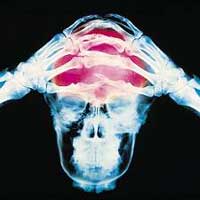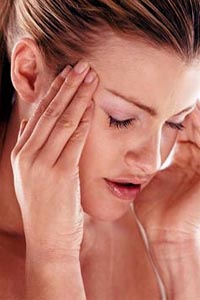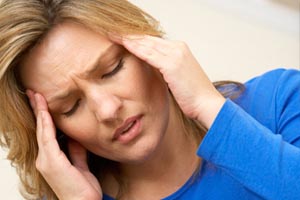
MIGTRIM - Herbal oil for external (scalp) use

- Migraine
- Status migrainous
- Cluster headache

How it works:
The anti-migraine principles in its ingredients are absorbed through the scalp. These principles prevent precipitation of migraine. The vascular active byproducts of migraine can't precipitate it as they are neutralized.
More than 29.5 million Americans suffer from migraine, with women being affected three times more often than men. This vascular headache is most commonly experienced between the ages of 15 and 55, and 70% to 80% of sufferers have a family history of migraine. Migraine is often misdiagnosed as sinus headache or tension-type headache.
The pain of a migraine headache is often described as an intense pulsing or throbbing pain in one area of the head. It is often accompanied by extreme sensitivity to light and sound, nausea, and vomiting. Migraine is three times more common in women than in men. Some individuals can predict the onset of a migraine because it is preceded by an "aura," visual disturbances that appear as flashing lights, zig-zag lines or a temporary loss of vision. People with migraine tend to have recurring attacks triggered by a lack of food or sleep, exposure to light or hormonal irregularities (only in women). Anxiety, stress, or relaxation after stress can also be triggers. For many years, scientists believed that migraines were linked to the dilation and constriction of blood vessels in the head. Investigators now believe that migraine is caused by inherited abnormalities in genes that control the activities of certain cell populations in the brain.

Migraine pain is often described as throbbing or pulsating pain that is intensified by routine physical activity, coughing, straining, or lowering the head. The headache is often so severe that it interferes with daily activity and may awaken the person. The attack is debilitating, and migraine sufferers are often left feeling tired and weak once the headache has passed.

A migraine typically begins in a specific area on one side of the head, then spreads and builds in intensity over 1 to 2 hours and then gradually subsides. It can last up to 24 hours, and in some cases, several days.
There may be accompanying symptoms such as nausea, vomiting, sensitivity to light (photophobia), or sensitivity to sound (phonophobia). Hands and feet may feel cold and sweaty and unusual odors may be intolerable.
Migraine characteristics include:
- Pain typically on one side of the head
- Pain has a pulsating or throbbing quality
- Moderate to intense pain affecting daily activities
- Nausea or vomiting
- Sensitivity to light and sound
- Attacks last four to 72 hours, sometimes longer
- Visual disturbances or aura
- Exertion such as climbing stairs makes headache worse
For more details visit : http://gurusgarden.com



